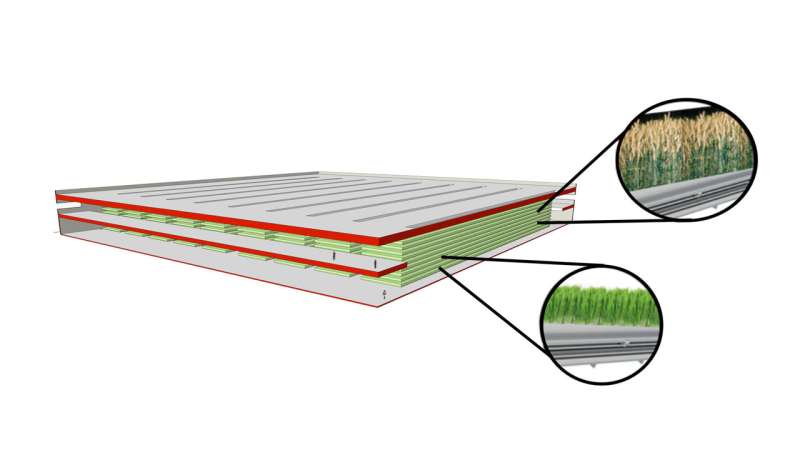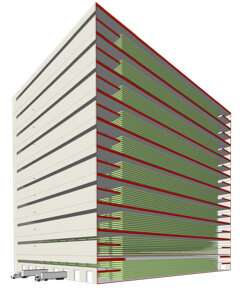July 28, 2020 report
The yield potential of wheat grown in controlled-environment vertical farms

A team of researchers affiliated with a host of institutions in the U.S. has investigated the yield potential of wheat grown on controlled-environment vertical farms, finding it higher than expected. In their paper published in Proceedings of the National Academy of Sciences, the group describes modeling indoor vertical wheat farming and what their models showed.
Vertical farming refers to stacking plats of crops in warehouse-like fashion in an indoor facility. Crops can be stacked as high as a facility allows. In such a facility, the crops must be provided with an artificial light source, water and fertilizer. Vertical farming has been proposed as a means for producing more crops per acre of land, but it has not been used commercially due to one very important limiting factor: energy use. Artificial light is very energy intensive—so much so that vertical farming has not been taken seriously. In this new effort, the researchers wondered how much more wheat they could grow per acre (compared to average yields on American farms) with vertical farming. To find out, they turned to a crop simulation model called DSSAT-NWheat. Prior research has shown it to be highly accurate in predicting crop growth under a wide variety of conditions.
To compare vertical farming with traditional farming, the researchers gave the crop simulator ideal conditions—10 layers, an optimal temperature, just the right amount of sunshine, the right amount of rain, fertilizer, runoff, etc. The simulations by the model showed that under such ideal conditions, vertical wheat farming could produce approximately 1,940 metric tons of wheat on a given hectare of land. In sharp contrast, traditional farming methods in good years typically produce on average 3.2 tons of wheat in the same amount of space. The vertical approach clearly resulted in much more wheat, but it also consumed far more energy—more than would make such an approach feasible. But the results also suggest that changed conditions, such as the availability of cheaper solar electricity or a dramatic rise in grain prices, could make vertical farming useful—especially as the world's population continues to rise.

More information: Senthold Asseng et al. Wheat yield potential in controlled-environment vertical farms, Proceedings of the National Academy of Sciences (2020). DOI: 10.1073/pnas.2002655117
Journal information: Proceedings of the National Academy of Sciences
© 2020 Science X Network



















